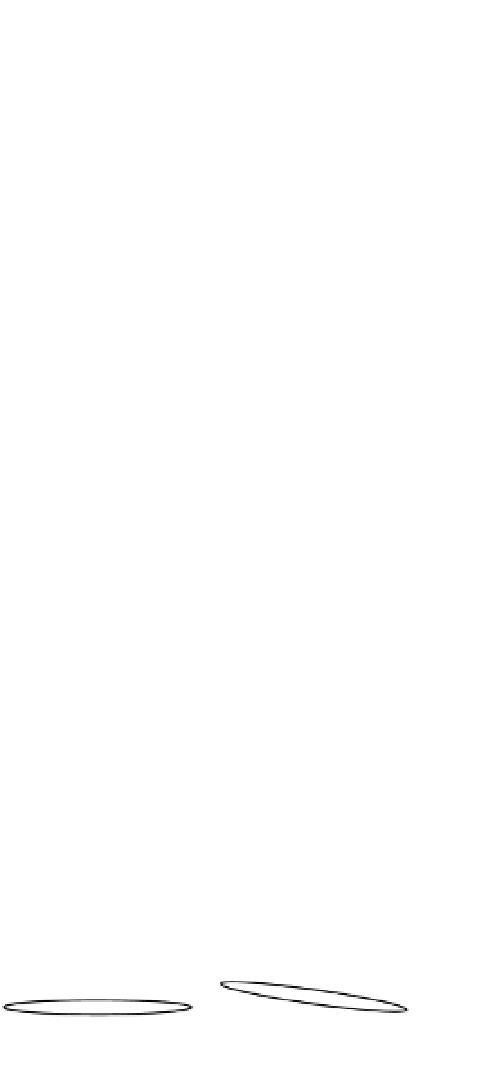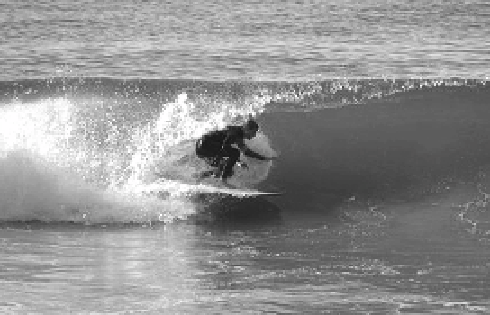Game Development Reference
In-Depth Information
Figure 9-13.
A surfboard is really just a boat. (Photo courtesy of Kevin Schmidtchen)
Buoyancy and Balance
Consider a surfer standing on a surfboard as shown in Figure 9-14. The surfer's weight acts
through the center of mass of the surfer and presses down on the board. The buoyancy force
resists the downward force, and it acts through the geometrical center of the surfboard. This
point is also known as the center of buoyancy. If the center of mass of the surfer is over or near
the center of buoyancy, as shown in left-hand side of Figure 9-14, the surfer and board are
balanced.
If the surfer moves back on the board, as shown in the right-hand side of Figure 9-14, the
center of mass of the surfer no longer lines up with the center of buoyancy. A moment is created
that pushes the nose of the board up and the aft end of the board down. The rotation continues
until the buoyancy force is once again lined up with the center of mass of the surfer. If the
surfer shifts her weight to one side of the board, a similar moment is generated that will cause
the board to roll.
mg
mg
F
B
F
B
Figure 9-14.
Moving the center of mass away from the center of buoyancy causes the board
to rotate.
Surfers can control the speed they are traveling by moving their center of mass forward or
backward on the board. If the surfer moves back, causing the nose of the board to lift up, the
speed of the board is reduced. If the surfer moves forward, the nose of the board tips down, and
the speed increases. If the center of mass is moved too far forward, the tip of the board will dip
underneath the surface of the water. This effect is known as
pearling
and usually causes the
surfer to fall off the board.










